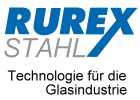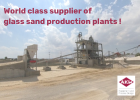INFO
Voici les informations fondamentales de l´entreprise. Cette entreprise a préparé d´autres informations f.ex le site internet, numéros de téléphone, télecopie, contacts, histoire et données géneriques.
Afin de recevoir ces informations en ligne ou pour les avoir imprimés, il faut avoir un "Profile Access" à glassglobal.com valide. Voir conditions ici: Price Info .
Contact
| Adresse | Omya GmbH Siegburger Str. 229c 50679 Köln |
| Pays | Allemagne |
| Get in contact with Omya GmbH |
Produits ou Machines
Raw material for glass production
Natural glass has existed since the beginning of time. It is formed when certain types of rocks melt as a result of high-temperature phenomena such as volcanic eruptions, lightning strikes or the impact of meteorites, and then cool and solidify rapidly.
The earliest man-made glass objects, mainly non-transparent glass beads, are thought to date to 3500 B.C. and have been found in Egypt and eastern Mesopotamia. In the third millennium, in central Mesopotamia, the basic raw materials for glass were being used principally to produce glazes on pots and vases.
The first glassmaking "manual" dates back to around 650 B.C. Instructions on how to make glass are contained in tablets from the library of the Assyrian king Ashurbanipal (669-626 B.C.).
From this long evolution of glass manufacture, we can subdivide the glass market today into three segments:
Flat glass,
Container glass (hollow glass) and
Fiber glass
Calcium carbonate is one of the main components in glass, along with silica and soda ash.
Calcium carbonate is used in glass as a stabilizer. It modifies viscosity and increases the durability of the glass.
For all types of glass, the common properties required of calcium carbonate are extremely low iron content, consistent chemical characteristics and low moisture content. Dolomite, a magnesium calcium carbonate mineral, can also be used as a stabilizer to improve the resistance of glass to natural or chemical attack in all three types of glass.




















